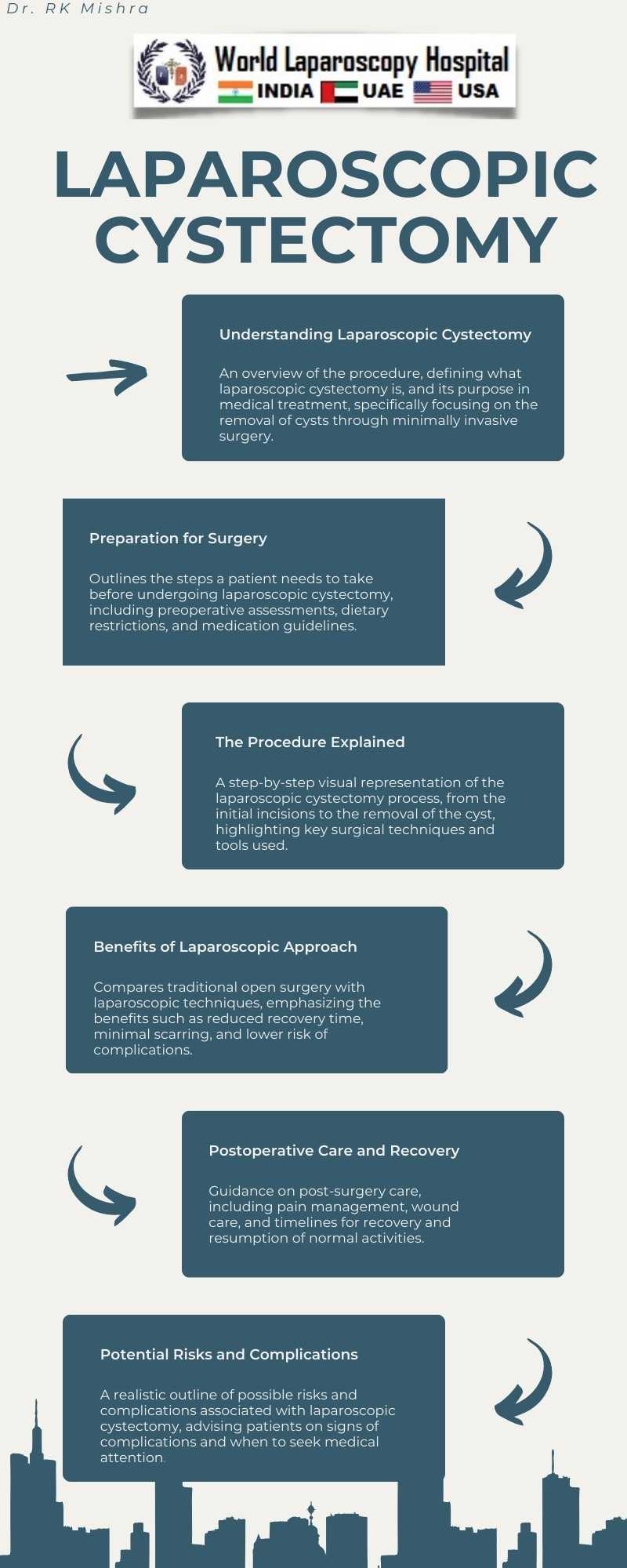Laparoscopic Cystectomy: A Modern Approach to Minimally Invasive Ovarian Surgery
Laparoscopic cystectomy represents a significant advancement in the field of gynecological surgery, offering a minimally invasive approach to treating ovarian cysts. This modern surgical technique has been increasingly adopted due to its numerous benefits over traditional open surgery, including reduced recovery time, minimal scarring, and lower risk of complications.

The Evolution of Laparoscopic Cystectomy
Historically, ovarian cysts were treated through open surgery, which required large incisions and a lengthy recovery period. The introduction of laparoscopy in gynecological surgery marked a pivotal change. This approach uses small incisions, typically less than a centimeter, through which a laparoscope (a thin tube with a camera and light) and specialized instruments are inserted to perform the surgery.
The Procedure
During a laparoscopic cystectomy, the surgeon makes several small incisions in the abdomen. Gas is used to inflate the abdomen, providing a better view and more working space. The laparoscope transmits images to a monitor, guiding the surgeon in removing the cyst. In most cases, the ovary is preserved, enhancing the patient's fertility prospects.
Advantages of Laparoscopic Cystectomy
1. Reduced Recovery Time: Patients typically experience a quicker recovery, returning to normal activities within a few days.
2. Less Pain and Scarring: Smaller incisions result in reduced post-operative pain and minimal scarring.
3. Lower Risk of Infections: The minimally invasive nature of the procedure decreases the risk of post-operative infections.
4. Shorter Hospital Stay: Many laparoscopic cystectomies are performed as outpatient procedures, meaning the patient can return home the same day.
Indications and Patient Selection
Laparoscopic cystectomy is indicated for benign ovarian cysts that are persistent, symptomatic, or suspicious in nature. Ideal candidates are those without a history of extensive abdominal surgeries, as previous procedures can increase the risk of adhesions, making laparoscopy more challenging.
Risks and Considerations
While laparoscopic cystectomy is generally safe, it's not without risks. Complications can include bleeding, infection, and damage to nearby organs. Additionally, there is a risk of the cyst recurring, especially in cases of endometriosis-related cysts.
The Future of Laparoscopic Cystectomy
Technological advancements continue to refine laparoscopic techniques. The introduction of robotics and enhanced imaging technologies, like 3D laparoscopy, promises even greater precision and safety. These innovations are paving the way for more complex procedures to be performed laparoscopically.
Conclusion:
Laparoscopic cystectomy offers a modern, minimally invasive alternative to traditional open surgery for treating ovarian cysts. Its benefits of reduced pain, faster recovery, and minimal scarring make it an attractive option for many patients. As technology continues to evolve, laparoscopic techniques will undoubtedly become even more effective and widely used in gynecological surgery.

The Evolution of Laparoscopic Cystectomy
Historically, ovarian cysts were treated through open surgery, which required large incisions and a lengthy recovery period. The introduction of laparoscopy in gynecological surgery marked a pivotal change. This approach uses small incisions, typically less than a centimeter, through which a laparoscope (a thin tube with a camera and light) and specialized instruments are inserted to perform the surgery.
The Procedure
During a laparoscopic cystectomy, the surgeon makes several small incisions in the abdomen. Gas is used to inflate the abdomen, providing a better view and more working space. The laparoscope transmits images to a monitor, guiding the surgeon in removing the cyst. In most cases, the ovary is preserved, enhancing the patient's fertility prospects.
Advantages of Laparoscopic Cystectomy
1. Reduced Recovery Time: Patients typically experience a quicker recovery, returning to normal activities within a few days.
2. Less Pain and Scarring: Smaller incisions result in reduced post-operative pain and minimal scarring.
3. Lower Risk of Infections: The minimally invasive nature of the procedure decreases the risk of post-operative infections.
4. Shorter Hospital Stay: Many laparoscopic cystectomies are performed as outpatient procedures, meaning the patient can return home the same day.
Indications and Patient Selection
Laparoscopic cystectomy is indicated for benign ovarian cysts that are persistent, symptomatic, or suspicious in nature. Ideal candidates are those without a history of extensive abdominal surgeries, as previous procedures can increase the risk of adhesions, making laparoscopy more challenging.
Risks and Considerations
While laparoscopic cystectomy is generally safe, it's not without risks. Complications can include bleeding, infection, and damage to nearby organs. Additionally, there is a risk of the cyst recurring, especially in cases of endometriosis-related cysts.
The Future of Laparoscopic Cystectomy
Technological advancements continue to refine laparoscopic techniques. The introduction of robotics and enhanced imaging technologies, like 3D laparoscopy, promises even greater precision and safety. These innovations are paving the way for more complex procedures to be performed laparoscopically.
Conclusion:
Laparoscopic cystectomy offers a modern, minimally invasive alternative to traditional open surgery for treating ovarian cysts. Its benefits of reduced pain, faster recovery, and minimal scarring make it an attractive option for many patients. As technology continues to evolve, laparoscopic techniques will undoubtedly become even more effective and widely used in gynecological surgery.
No comments posted...
| Older Post | Home | Newer Post |

